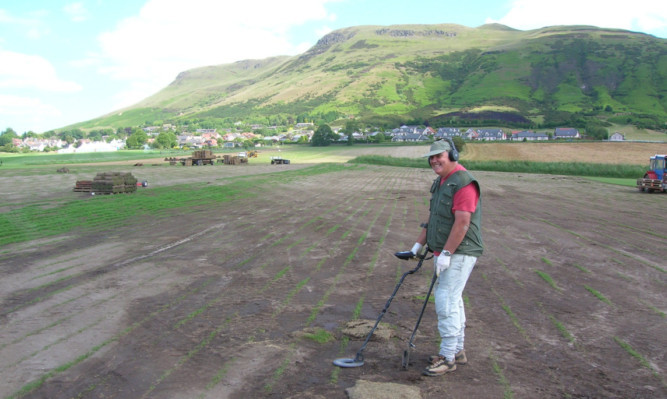The latest addition to the Kinross Museum collection has been described as “the most exciting” since it opened its doors in 2010.
During the summer of 1963, workmen excavating gravel on Carsegour Farm to the south of the town uncovered what it emerged was a near 5,000-year-old Bronze Age food vessel.
In the absence of a local museum at that time, the vessel’s owners, William and Charlotte Watson, loaned it to the Dunfermline Heritage Trust for public display at Abbot House.
Now, 50 years after its discovery, the vessel has returned home to go on public display in Kinross-shire for the first time.
It has been gifted to the museum by Mr Robert McEwan, of Dunfermline, just in time for the mounting of an exciting new exhibition entitled A Loch of Bronze New Finds from Kinross-shire’s Bronze Age.
The special showing is being planned by the Kinross Museum Trust in partnership with Perth Museum and the National Museums of Scotland.
Opening this summer, it will feature the Bronze Age hoard discovered near the shores of Loch Leven by metal detectorist Jim Crombie.
Mr Crombie, from Lochgelly, has turned up dozens of interesting finds in Kinross-shire, including spears, axes, a Roman brooch and a mysterious engraved ring.
In 2011, he discovered a tiny silver coin, believed to be an example of the first coin issue ever made by a Scottish monarch.
Based at the Loch Leven Community Campus, the museum is run by a group of dedicated volunteers, led by Professor David Munro.
“The new exhibition features a number of recent finds made over the past six years by metal detectorist Jim Crombie,” he said.
“He has unearthed quite a number of items around two dozen in fact from near to the shores of Loch Leven. The oldest of the items dates back some 4,000 years, though the majority are from around 1,000 years earlier.”
The items found around the loch include examples of tools and weapons, including axeheads, gouges, sword blades, halberds and spearheads, and provide an exciting insight into early life in what is now Kinross-shire.
“We are learning ever more about where people lived, their daily life and their rituals,” Professor Munro continued.
“A number of items discovered are highly decorated, which may suggest some degree of wealth. That they ended up in the water suggests that they were probably thrown into the loch as part of ritual practices.”
The exhibition will open on June 1 and is expected to run until the end of January 2014. While the exhibition is being staged, it is hoped that school parties will use the displays as the basis for projects.
Each year the museum team stages a number of exhibitions, researches local history, helps visitors with genealogy research and sorts through hundreds of photographs, records and items of local interest.
They have received invaluable support in their efforts to shine a light on Kinross-shire’s rich history from over the country.
“We receive a constant flow of donations and there really isn’t a week that goes by without something new and interested coming through our doors,” Professor Munro explained.
“We have been operating now for three years and we have probably acquired more than 30 items in that time, including memorabilia, photographs and artefacts.
“Recently, we received a very interesting collection of medals and cups from the Orwell Curling Club, some of them dating back to the 1820s.
“Many organisations find that they don’t have the space to hold such items, while we can keep them in safe and stable conditions.
“We now have a team of around 20 volunteers, who find the museum offers quite an exciting opportunity to get involved in a host of interesting projects.”
